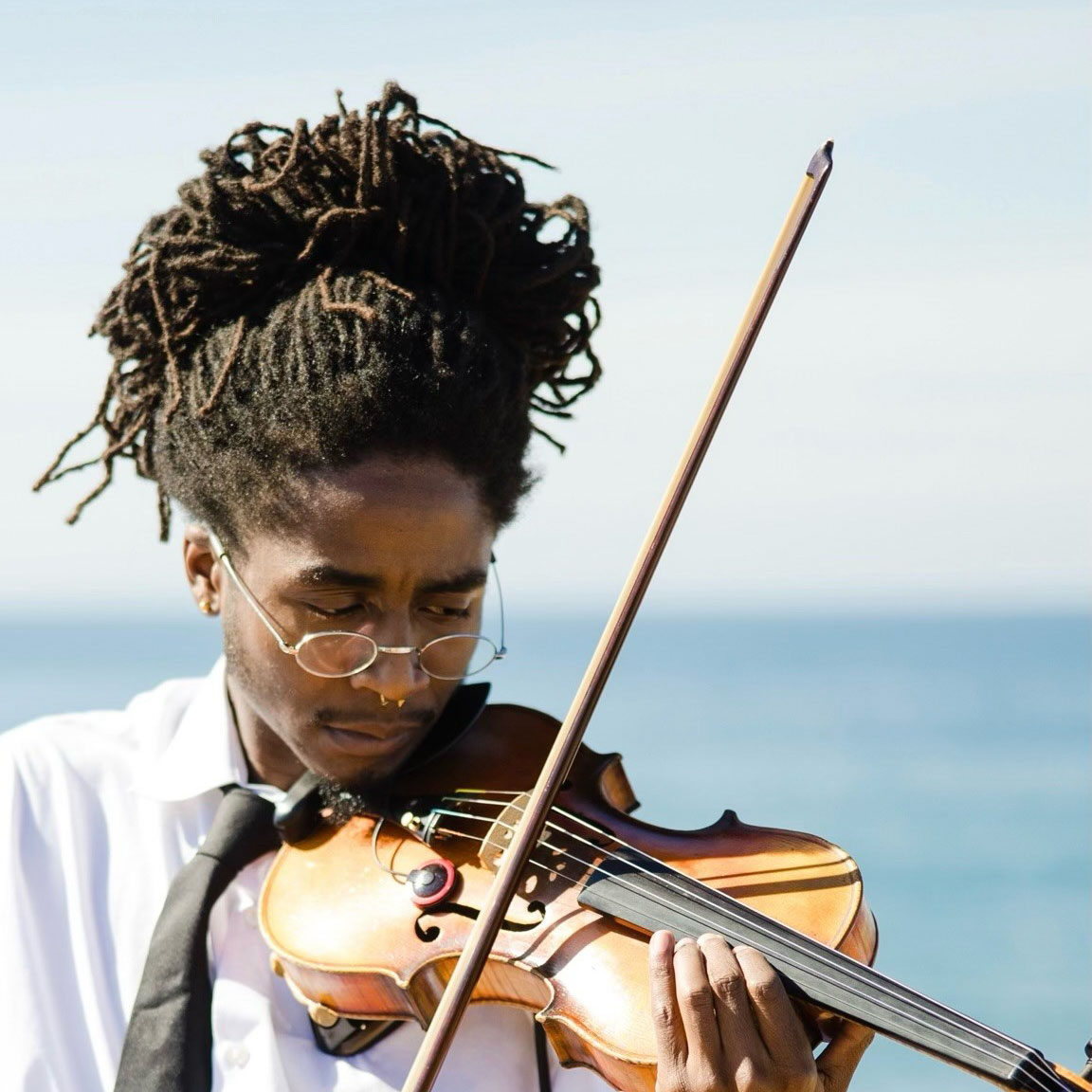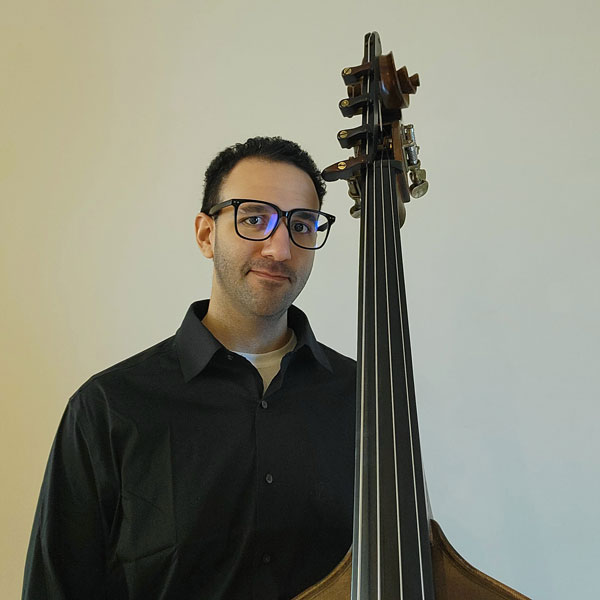What about the music?
An inside look with the Virginia Symphony Orchestra
Highlight: Tchaikovsky 6

The Performers

Meet our Conductor
Eric Jacobsen
Hailed by the New York Times as “an interpretive dynamo,” conductor and cellist Eric Jacobsen has built a reputation for engaging audiences with innovative and collaborative programming. He is the newly-named Music Director of the Virginia Symphony, becoming the 12th music director in the orchestra’s 100-year history.
Jacobsen is Artistic Director and conductor of The Knights, and serves as the Music Director for the Orlando Philharmonic Orchestra. Jacobsen founded the adventurous orchestra The Knights with his brother, violinist Colin Jacobsen, to foster the intimacy and camaraderie of chamber music on the orchestral stage. Eric splits his time between New York and Orlando with his wife, singer-songwriter Aoife O’Donovan, and their daughter.

Curtis Stewart
Violinist, Composer
Multi-GRAMMY nominated violinist/composer Curtis Stewart aims to translate stories of self determination to the concert stage – tearing down the facade of “Classical Violinist,” Curtis is in constant pursuit of his musical authenticity – treating art as a battery for realizing citizenship.
As a a soloist, Curtis has been presented by Lincoln Center, the Kennedy Center, the Eastman School of Music, The Juilliard School, Carnegie Hall, and the 2022 GRAMMY Awards, among many others. He has been commissioned for solo, orchestral and chamber works by the Virginia Symphony, the Royal Conservatory of Music, the Eastman Cello Institute, Sybsrite5, curators of the New York Festival of Song, and Carnegie Hall: Play/USA.
An avid teacher, Curtis teaches Chamber Music and “Cultural Equity and Performance Practice” at the Juilliard School; directs the Contemporary Chamber Music program at the Perlman Music Program; served on the Board of Concert Artist Guild; and conducted several orchestras, Opera pit, and all levels of music theory at the Laguardia High School for Music & Art and Performing Arts for ten years in New York City. Curtis graduated magna cum laude from the Eastman School of Music with a BA of Mathematics from the University of Rochester.

Andrew Roitstein
Bass
A native of Valencia, California, bassist Andrew Roitstein has been featured in chamber music concerts in New York’s Zankel Hall and Washington DC’s Kennedy Center, and has performed with the New York Philharmonic and Hong Kong Philharmonic. He is a founding member of the award-winning Toomai String Quintet, an ensemble that has appeared in chamber music series at Carnegie Hall and the 92nd St. Y, among others. Mr. Roitstein has recorded for artists such as Joanna Newsom (Drag City) and Jessica Pavone (Tzadik Records). In 2007, he won second prize in Juilliard’s Double Bass Concerto Competition and was a semifinalist in the 2011 International Society of Bassists Solo Competition. He has participated in the Lucerne, International Ensemble Moderne Academy, Aspen, and Sarasota music festivals. Mr. Roitstein enjoys playing Latin American music and performs with Argentinian Tango greats Hector Del Curto and Pablo Ziegler. In addition to performing, Roitstein is dedicated to education and serves as Senior Music Curriculum Specialist for Juilliard Global Ventures and faculty of the New York Philharmonic’s “Philharmonic Schools” program. As an arranger, his works have been performed by members of the Chamber Music Society of Lincoln Center, members of the New York Philharmonic, and Joshua Bell. Mr. Roitstein received his Master’s and Bachelor’s degrees at the Juilliard School, where he was a student of Eugene Levinson.

Hamilton Berry
Cello
Cellist Hamilton Berry’s eclectic taste has led him to pursue a variety of performing, arranging, and composing projects in the New York area and beyond. A member of PUBLIQuartet, the Toomai String Quintet, Founders, and The Con Brio Ensemble, Hamilton has also performed with Ensemble Connect, Decoda, NOVUS NY, The Orchestra of St. Luke’s, and A Far Cry, and has collaborated with pop artists including Vampire Weekend, Rostam, Bjork, Debbie Harry, FUN., Cults, and Becca Stevens. He is Assistant Program Director of the Musicambia program at Sing Sing Correctional Facility, where he teaches string students.
A Nashville native, Hamilton has played at the Cooperstown, Mecklenburg- Vorpommern, Olympic, and Yellow Barn music festivals. In 2009 he received his Master of Music from the Juilliard School, where he studied with Timothy Eddy; his previous teachers include Felix Wang, Grace Bahng, and Anne Williams. During his fellowship with Ensemble Connect – a program of Carnegie Hall, Juilliard, and the Weill Music Institute in partnership with the New York City Department of Education – Hamilton was a visiting teaching artist at IS61 on Staten Island.
The Creators

Pyotr Ilyich Tchaikovsky
(chai·kaaf·skee)
(1840-1893)
Fast Facts:
- Tchaikovsky was born in 1840 in Russia, where he was the second eldest of his parents’ six surviving offspring.
- Tchaikovsky displayed astute musical abilities from a young age as he improvised on piano and composed at age 4.
- It wasn’t until Tchaikovsky premiere his Piano Concerto No. 1 in B-Flat Minor that he received acclaim for his compositions. Prior to this concerto, he released two symphonies and multiple operas, which did not collect the same fanfare as this Piano Concerto.
- Tchaikovsky is most known for his ballets including, Swan Lake, The Sleeping Beauty, and The Nutcracker.
- In 1878, Tchaikovsky resigned from faculty at the Moscow Conservatory. The only way he could afford this was because of the patronage of a wealthy widow named Nadezhda von Meck. The only catch with their arrangement was that they could never meet.
- Coincidentally, Tchaikovsky died nine days after the premiere of his Sixth Symphony, which highlights the inevitable fate of death that all humans suffer with.
The Piece – Symphony No. 6 in B Minor “Pathétique”
As Tchaikovsky’s final symphony, Symphony No. 6 is known for its extreme passion, hence the nickname “Pathétique” which means solemn or emotive in French. This symphony first premiered in 1893, nine days before Tchaikovsky’s death. After his Symphony No. 5, Tchaikovsky wrote to his friend that he wanted “terrible to write a somewhat grandiose symphony, which would crown my artistic career.” To most, this symphony is regarded as one of Tchaikovsky’s greatest symphonies, fulfilling his dream.
Tchaikovsky’s symphonies often include what he noted as a “secret program” or outline that he creates for his symphonies. His Fourth, Fifth, and Sixth symphony all include these secret programs which all outline a struggle with fate. However, in this work, the melodies of Symphony No. 6 face fate rather than stalked by it as hear in his Fourth and Fifth Symphonies. Tchaikovsky described the secret program for Symphony No.6 as “the ultimate essence… of the symphony is Life. First part – all impulse, passion, confidence, thirst for activity…Second part love: third disappointments; fourth ends dying away.” The movements of Symphony No. 6 similarly reflect this outline as the first movement is passionate and thirsting for life, the second a romantic waltz, the third a frantic scherzo, and the fourth with a lamenting end, closing with an intimate, personal pain.

Samuel Coleridge Taylor
(1875-1912)
Fast Facts:
- Coleridge-Taylor was born in 1875 to an English mother and Sierra Leone father. He identified as Anglo-African.
- Coleridge-Taylor was named after the famous poet Samuel Coleridge-Taylor, who inspired some of his works throughout his career.
- In many of his works, like the “24 Negro Melodies,” Coleridge-Taylor infused many traditional African music into his works, making him one of the most progressive composers of his time.
- Coleridge-Taylor’s most renown work is his cantata trilogy: Hiawatha’s Wedding Feast. The work became so popular, he was able to overcome the stagnant racism at the time and pursue three tours of the US with the work.
- President Theodore Roosevelt once invited Coleridge-Taylor to the White House, which was considered a huge step forward for Black Americans.
- Coleridge-Taylor died prematurely at age 37 due to pneumonia.
THE PIECE: Recompositions of “24 Negro Melodies”
Arrangements of 3 selections from 24 Negro Melodies for violin and string orchestra. Deep River, They will not Lend me a Child, The Angels Changed my Name. I was drawn to an approach of dealing with the history of slavery within one’s family, the ownership of a name and its “rebranding” – reflecting on the American Slave and how Black Americans deal with creating a sense of pride, familial storytelling and lineage in contemporary America.
This notion of “rebranding” extends to the “Negro Melody.” Coleridge-Taylor originally wrote 24 solo piano works based on spirituals and songs from many parts of the world including Africa and the Americas. My intent with these arrangements is to acknowledge the impact of those melodies on current popular culture, and reflect that influence onto the orchestral stage – to create moments where listeners may participate vocally, with movement, or rhythmically clapping along- to maintain a sense of belonging and recognition – to create community around this music in the classical concert hall – to embrace where all contemporary American Concert music extends from, in my belief – America’s mother-music: the Blues.”
Samuel Coleridge Taylor – 3 selections from 24 Negro Melodies
- Deep River (America) arr. by Coleridge-Taylor/Stewart/Berry
- They Will not Lend me a Child (Southeast Africa) arr. Stewart/Roitstein
- The Angels Changed My Name (America) arr. Stewart







